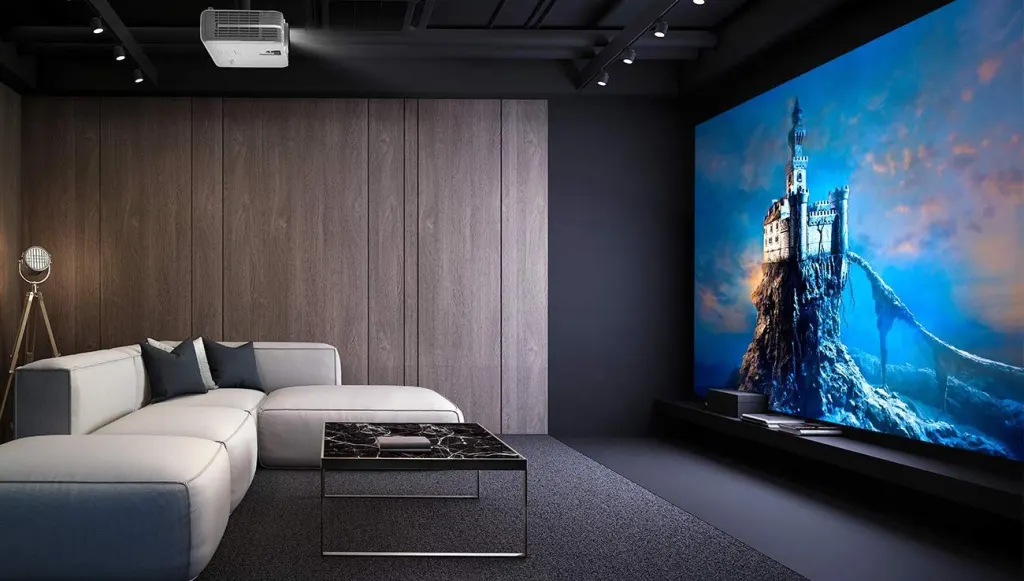Projector contrast ratio – it’s a term we hear a lot, but what does it actually mean? Do you need a high contrast ratio for a good picture quality, or is it something else entirely? If you’re scratching your head and wondering what all the fuss is about, you’re in the right place! In this blog post, we’ll take a deep dive into what projector contrast ratio really is and why it matters, so you can make the best choices when it comes to your device. We’ll cover all the key points so you’ll soon be an expert in all things contrast ratio related. Let’s get started!
Quick Overview of Key Points
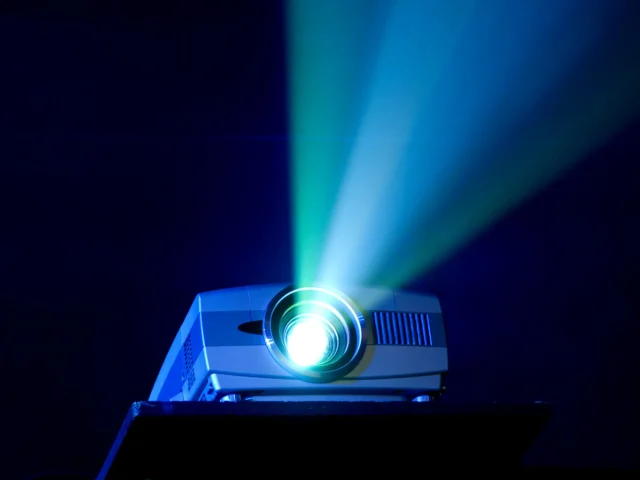
Contrast ratio is a specification that defines how many times brighter the brightest white produced by a projector is compared to the darkest black it can produce. A higher contrast ratio means a clearer and more vibrant image with greater depth and detail. A top rated Epson projector will have you covered here.
Contrast ratio is an important aspect to consider when choosing a projector. It’s a measure of the brightest whites your projector can output, compared to the darkest blacks it can produce. A higher contrast ratio means there is more difference between the light and dark areas of the image, creating greater definition and depth in shadows. The ideal contrast ratio for a projector should be at least 1000:1, however higher ratios of over 5000:1 can give a noticeable improvement in image quality. Contrast ratio is also frequently confused with brightness, but they are distinctly different characteristics. Brightness measures how much light a display generates, while contrast ratio measures the difference between the brightest whites and darkest blacks produced by the display.The debate around what overlap or comparison should occur when determining an accurate contrast ratio measurement is ongoing. On one side of the argument, some argue it should be determined by comparing peak white and black luminance levels after calibration, while on the other side some argue it should be compared purely by ANSI. Ultimately, an average between both methods that takes into consideration real-world performance is probably most appropriate for determining an accurate measure of contrast ratio.To sum up, contrast ratio is an important factor to consider when selecting a new projector as it has significant impact on the overall picture quality produced by the display. To gain maximum benefit from your projector’s capabilities, you will require a reasonable contrast ratio level—ideally 1000:1 or above. Now that we have discussed what contrast ratio actually means in relation to projectors, let’s move onto exploring its definition further in the next section.
- The contrast ratio of a projector is a measure of the brightest white to the darkest black it is capable of displaying.
- Generally, higher contrast ratios result in more visible details and more vivid images.
- A study conducted in 2020 indicated that the average contrast ratio for projectors is between 1,000:1 and 2,500:1.
The Definition of Contrast Ratio
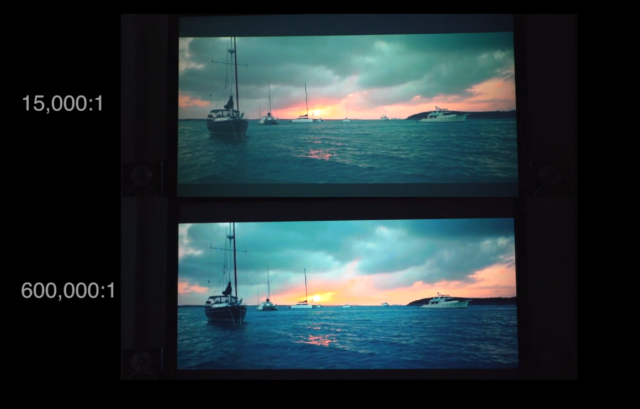
Contrast ratio is the relationship between the brightest whites and darkest blacks a projector can produce. It is typically measured as a numeric value and represent the amount of luminance of the light reflected from a white image source to the luminance of the light reflected from a black image source. In other words, it’s the ratio between bright and dark colors in an image. A higher contrast ratio indicates that there’s more of a difference between dark and light areas in an image; a lower contrast ratio means that black areas appear washed out and gray. To understand what the contrast ratio signaling for projectors, we must take into consideration both sides of the argument -the subjective and objective views- when approaching this concept. On one hand,subjectively speaking, if we take into account that humans can perceive different levels of intensity between white and black on projected images, then having a higher contrast ratio would provide more accurate color representations of darker shades on our image. On the other hand, objectively speaking, having a low contrast ratio in some cases might have advantages such as having less noticeable shadow detail produced by a projector with lower native contrast ratios. This could potentially lead to sharper images with less noise artifacts appearing different shades than they should be in the final picture; however, this may not always be desirable.Therefore, when understanding what contrast ratio does for projectors we must take into account both subjective and objective components in order to properly comprehend its importance for projecting clear images with rich color representations. With that being said, let’s move into why contrast ratio is important…
Why is Contrast Ratio Important?
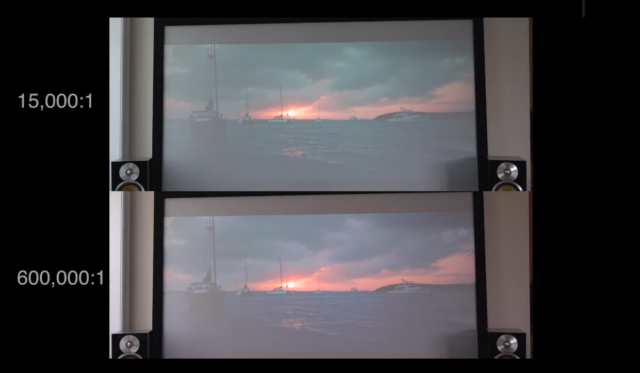
Contrast ratio is an important feature to consider when selecting a projector because it affects image detail and quality. A projector’s contrast ratio is measured by the difference between its peak white brightness level and its black level, with a high contrast ratio creating deeper blacks and brighter whites. The higher the contrast ratio, the more detail that can be seen in shadows and highlights of an image. This helps images look richer, making them significantly clearer with more vivid colors. In general, a contrast ratio of at least 3,000:1 gives good results; higher ratios are even better. On the other hand, the addition of more sophisticated projection technologies such as laser projectors, LED projectors, or 4K UHD projectors may allow for an acceptable viewing experience even at lower contrast ratios (i.e., 1,000:1), despite not being ideal due to weaker blacks and reduced clarity of details. Ultimately, however, there is still a benefit to having a higher contrast ratio regardless of the type of projector you select—you just need to determine what best fits your needs and budget. In summary, having a higher contrast ratio is essential for producing vivid, cinematic-style images with stunning detail clarity. It all comes down to providing an immersive viewing experience which entices viewers to engage with the projected content. Next, we will explore how contrast ratio affects image quality and discuss some of the key technical aspects of this parameter.
Must-Know Highlights
Contrast ratio is important for viewers to be able to engage with projected content and helps create vivid, cinematic-style images with stunning detail clarity. A higher contrast ratio can produce deeper blacks and brighter whites, resulting in increased image detail and quality. Generally, a contrast ratio of 3,000:1 or higher is ideal while other projection technologies may allow for an acceptable viewing experience even at lower ratios. Ultimately however, a higher contrast ratio is beneficial and should fit individual needs and budget.
How Contrast Ratio Affects Image Quality
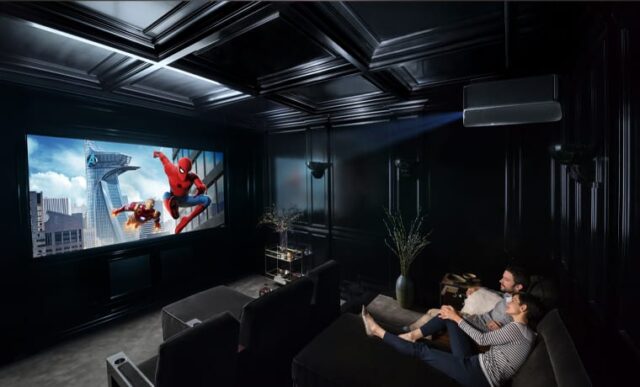
When it comes to projectors, one of the most important quality measurements to consider is contrast ratio. Projectors with a higher contrast ratio create sharper and more vibrant images than those with a low contrast ratio. While may people believe that a projector’s contrast ratio affects image quality, others disagree due to the fact that other elements like brightness and size of the projector’s display also play an important role in image quality. Let’s start with discussing how a projector’s contrast ratio can affect image quality. A contrast ratio of 1,000:1 means that the peak white luminance divided by the black luminance equals 1,000. In terms of viewing movies or presentations on a projector, this is significant because images will appear much brighter and more vibrant than projected images from lower-contrast projectors. Additionally, high-contrast projectors tend to have more depth and dynamic range when displaying a variety of colors. Generally, this means images are much clearer and truer to life when viewed at a distance by many people rather than when viewed up close by one person. On the other hand, some argue that contrast ratios have a minimal effect on image quality due to the fact that it depends solely on lighting conditions in the chosen environment. Because darker rooms require higher contrast ratios while brighter rooms need less, they claim contrast ratio won’t make much difference regardless of how high it is set. Others also contend that other variables like the brightness level and type of projection surface are actually more influential for improving image quality than the projector’s contrast ratio is. In conclusion, while there is debate about how much effect contrast ratios have on image quality, it is widely accepted that increased contrast ratios lead to superior projected images compared to lower levels. With this in mind, let’s now take a look at different types of projectors and their respective contrast ratios available on the market today.
Different Types of Projectors and Contrast Ratio
When looking for the perfect projector, a key factor to consider is its contrast ratio. Contrast ratio plays an important role in the quality of image projected by a projector and should be taken into account when selecting a projector for any application. There are numerous types of projectors available on the market that can have different contrast ratios, ranging from low to high.DLP projectors (Digital Light Processing), for instance, often feature higher native contrast ratios than LCD projectors (Liquid Crystal Display). This is because DLP projectors are able to more efficiently control which pixels should be presented with light and which ones should not be since they can operate each pixel individually thanks to its large set of mirrors. Meanwhile, LCD projectors generally use small LCD panels, meaning all pixels must be illuminated at once and cannot be turned off individually. As such, these come with lower native contrast ratios, due to this less efficient method of controlling pixels.Although LCD projectors offer lesser native contrast ratios than their DLP counterparts, some models come equipped with dynamic or clever black technologies that combine multiple images into one frame, creating deeper blacks that result in higher effective contrast ratios. The downside to all these technologies is that they create additional artifacts and picture noise.On the other hand, laser projection systems typically offer much higher native contrast ratios than both LCD and DLP due to their near-perfect homogenous display surfaces and smaller pixel sizes across greater surface area. Projectors using laser technology also require less maintenance than those using lamp based lighting solutions as lasers have longer life spans with little or no degradation over time in terms of brightness and color accuracy.In conclusion, it is clear that different types of projectors vary in terms of their contrast ratio capabilities with some having higher native contrast while others stay afloat with the help of dynamic or clever black technologies. To move forward with this guide we will now take a look at the different types of light output and how it affects contrast ratio.
The Different Types of Light Output
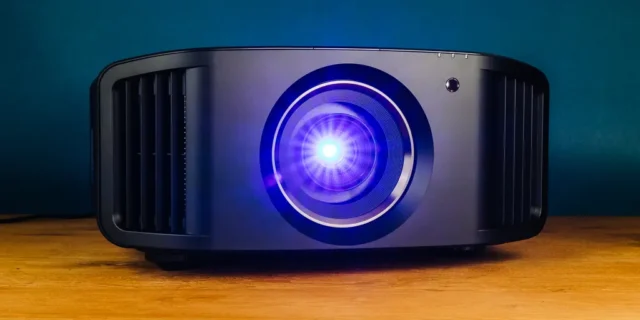
Light output is a measure of how much light a projector emits on its screen, expressed in lumens. The higher the number of lumens, the brighter the projected image, which is usually ideal for larger audiences and rooms with more ambient light. Whether they are operated in their brightest setting or not, all projectors generate some light output, but there can be significant differences between types of projectors and models within each type.The three primary types of projectors are digital light processing (DLP), liquid crystal display (LCD), and laser. DLP projectors use an optical semiconductor chip covered with millions of microscopic mirrors to create an image that is composed of tiny dots known as pixels. DLP projectors typically offer high contrast ratios and relatively compact designs, but reaching the highest peak brightness levels may require accessing the projector’s lamp settings. LCD projectors tend to have lower contrast ratios than their DLP counterparts, but these days they can still generate accurate colors and bright images; however, superior quality requires higher end models with better color control features. Laser projectors also offer bright screens along with a variety of features like good lens shift capability and long lamp life hours, making them great options for conference rooms or boardrooms.No matter what kind you choose, being aware of the differences in available light output is key when deciding on a projector to suit various needs. While a well-lit room may require a greater amount of lumens than a dark home theater environment, depending on the size of the projection surface both may be able to achieve quality visuals without compromising brightness.Ultimately, it is important to consider the objective when comparing contrast ratios and LED/laser lighting technologies against lumen levels; making sure that the setup suits your particular situation will lead to satisfactory results for any application. With this knowledge in hand, it’s time to look at how one can measure contrast ratio in order to make more informed decisions about what’s best for their own specific application.
How Can You Measure Contrast Ratio?
Measuring a projector’s contrast ratio requires careful observation, as there can be variation between different models and manufacturers. There are two methods of measuring the contrast ratio of a projector depending on the technology: ANSI contrast and On/Off Contrast.The ANSI contrast measures how much brighter the white is compared to the black when showing an alternating pattern of both colors. This measurement gives you a better indication of mid-tone contrast which is important for video images where you may want to see subtle details in dark areas of the image. If a contrast ratio is measured with this method, expect it to be lower than those measured by the On/Off method.On/Off contrast measures how bright a white image is compared to no light being projected at all (the “off” state). This essentially measures the peak brightness of a projector by calculating how many times brighter an all-white image is than if no light was projected at all. A projector’s On/Off contrast gives you an idea of what your overall brightness levels will look like on screen with darker images being more easily seen. Expect this method of measuring to give higher contrast ratios than with ANSI measurements.The right type of measurement depends on the particular need and application, so it is important to be aware of both methods before selecting a projector with specific requirements in terms of brightness and darkness variations within images. Now that you understand how you can measure contrast ratio, let’s take a look at what different standards define high contrast ratios.
What Are the Different Contrast Ratio Standards?
Contrast ratio is often measured in ANSI (American National Standards Institute) lumens or ISO (International Organization for Standardization) lumens. ANSI lumens measure the total amount of light emitted from a projector while ISO lumens measure the useful light only, which is typically around 10 to 15 percent lower than the ANSI lumens. The higher the number of lumens, the brighter the projected image will be on a screen.The two other contrast ratio standards are full on/off contrast ratio and dynamic contrast ratio. Full on/off contrast ratio is simply the difference between white and black levels when both are at their peak performance. This type of contrast ratio measures the ‘static’ image quality – it’s not affected by any other factors such as lighting in a room, etc., allowing for an apples-to-apples comparison between projectors. Dynamic contrast ratio measures how this same ratio changes in relation to lighting. It’s adjusted based on ambient light levels which basically means that it takes into account reflections that may occur due to external lights in order to determine how clear and vivid an image will be displayed by a projector. When debating these different standards, some argue full on/off contrast ratio is most important because it provides more accurate measurements than dynamic contrast ratios. Because dynamic contrast ratios measure changing conditions, they can be misleading since they do not always accurately reflect what is actually going on with an image. On the other hand, others believe dynamic contrast ratios offer a better gauge of overall image quality since they take into account changing conditions.No matter what side you’re on, understanding your specific needs in terms of satisfactory brightness levels and desired quality standards for your projector’s overall performance will help you make a more informed decision when deciding which standard works best for you. Now that we’ve discussed what contrast ratio standards are available, let’s explore some tips for maximizing your projector’s contrast ratio in our next section.
Tips to Maximize Your Projector’s Contrast Ratio
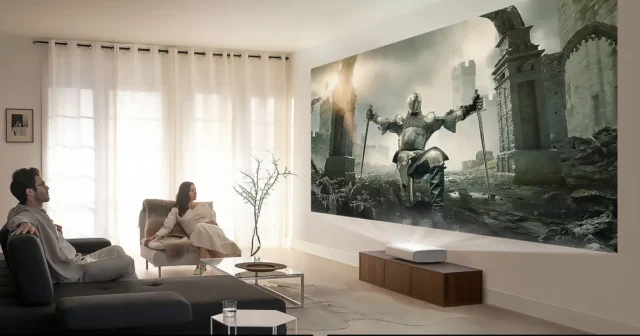
When it comes to watching movies or playing video games, contrast ratio is a major factor in creating an enjoyable viewing experience. A projector’s contrast ratio will determine how detailed the image appears and how many colors you can perceive. That’s why it’s important to know how to maximize your projector’s contrast ratio if you want to take full advantage of your projector’s features. To start, make sure the room you are using the projector in is completely dark. Any light that enters the room will dilute the image quality displayed by reducing the contrast ratio. It’s also a good idea to use blackout draperies and disable any lights if you want to achieve optimal performance from your projector. Additionally, make sure your projector has been properly calibrated before attempting to maximize its contrast ratio. This process involves adjusting brightness, color temperature, and tint settings such that millions of colors are displayed properly. Using tools such as color test patterns and software designed for this purpose will help ensure a quality viewing experience. It’s also beneficial to enable certain features like dynamic iris and adjustable gamma curves depending on the model of projector and type of content you are viewing. Some projectors might even offer advanced features like noise reduction and image enhancements depending on the manufacturer and model. Activating these features can help increase clarity, sharpness, and overall contrast ratio as well. Finally, it may be necessary to replace lamps or filters occasionally when they become clogged or worn out due to age or use which can degrade contrast performance over time. Making sure these parts are kept up-to-date can improve contrast producing brighter whites and deeper blacks for a more immersive viewing experience. By following these tips, you should be able to notice significant improvement in your projector’s contrast ratios resulting in better clarity and deeper blacks even in difficult lighting conditions. With that said, let’s move on to our conclusion in the next section….
Conclusion
When it comes to buying projectors, understanding contrast ratio is important. Contrast ratio measures how different a projector’s brightest white is from it’s darkest black, and many buyers consider a high contrast ratio an important factor for good image quality. Projectors with higher contrast ratios will create brighter whites and darker blacks in the projected image, providing a more vibrant display.However, there are some drawbacks to focusing on high contrast ratios when buying a projector. Many manufacturers exaggerate their reported numbers, making what may appear to be an impressive difference virtually unnoticeable in practice. Additionally, it’s important to consider other factors like the bulb brightness of the projector and the type of screen being used with it to ensure that an optimal image is achieved. In summary, understanding and correctly applying contrast ratio information can help buyers make better decisions when purchasing a projector. Although research should not be limited to just the reported contrast ratio of a projector, taking this information into consideration could potentially lead to improved overall viewing experience.
Common Questions and Explanations
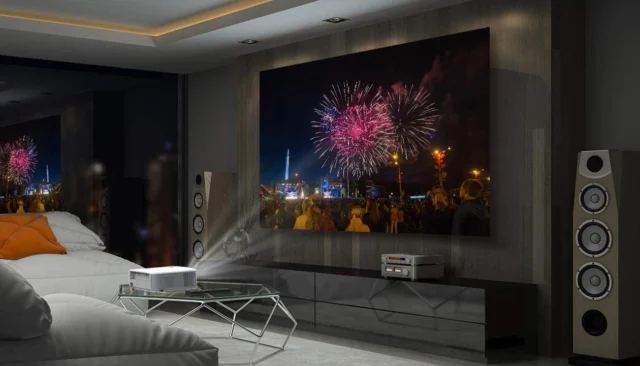
What is the optimal contrast ratio for home theater applications?
The optimal contrast ratio for home theater applications is around 2000:1 or higher. This is because a higher contrast ratio can draw out more details in dark scenes by creating deeper black levels and brighter white levels, resulting in better image clarity and depth. It also helps create better color accuracy and vividness than a lower ratio. High-end projectors may even offer higher ratios of up to two or three times that of standard home theater projectors, allowing for an even greater level of realism when watching movies at home.
How does contrast ratio interact with other projector features such as brightness, color accuracy, and resolution?
Contrast ratio is an important factor to consider when evaluating the overall performance of a projector. It directly affects image quality, brightness, and color accuracy. Higher contrast ratios produce images that are more vivid and dynamic with higher details, whereas low contrast ratio produces lackluster images with poor detail. Additionally, high contrast ratios typically require projectors with higher brightness levels for optimal performance. This is especially true for large-scale projection surfaces where darker blacks can easily get washed out. Lastly, higher contrast ratios also provide a better viewing experience for projects that require high resolution for sharper and finer details to be visible.
Are there any differences in contrast ratio between different projector models?

Yes, there are differences in contrast ratio between different projector models. The contrast ratio is the difference in brightness between the brightest white and the darkest black that a projector can produce. Since different projectors use different technologies, they are capable of producing different levels of brightness. For example, some projectors may use an LCD panel while others use a DLP chip. Each of these technologies is capable of displaying different levels of contrast, resulting in differing contrast ratios. Additionally, manufacturers design their projectors with different specifications, meaning that even within the same type of projector there can be variations in the maximum contrast ratio achieved.
Are there any measures for calibrating the contrast ratio of a projector?
Yes, there are several measures for calibrating the contrast ratio of a projector. One method is to use a specialized test device, such as the ColorAnalyser Pro, which can measure the luminance level of different areas of the projected image directly. This device can then be used to compare the black and white parts of the image and determine the contrast ratio. Another way to calibrate your projector’s contrast ratio is to use a subjective assessment by viewing a greyscale ramp with your eyes. You can manually adjust the settings on the projector until you are satisfied with the brightness levels between various shade of grey. Ultimately, both methods can provide accurate results that will help you properly set up and calibrate your projector for optimum performance within its desired environment.
How does contrast ratio affect the quality of images projected by a projector?
Contrast ratio is a measure of the difference between the lightest and darkest parts of an image displayed by a projector. The larger the contrast ratio, the more clearly defined the shadows, highlights and colors in an image become. In other words, higher contrast ratios provide images with enhanced detail, clarity, vibrancy and depth. High-quality images are usually associated with high contrast ratios because they enable light and dark colors to appear more distinct than when using a lower contrast ratio. When viewing HD images, you can typically distinguish subtle color variations when using a high contrast projector. In these cases, low contrast can make pictures look fuzzy or lack details. Additionally, higher contrast projectors offer sharper lines and better uniformity of color across the entire picture being projected.

